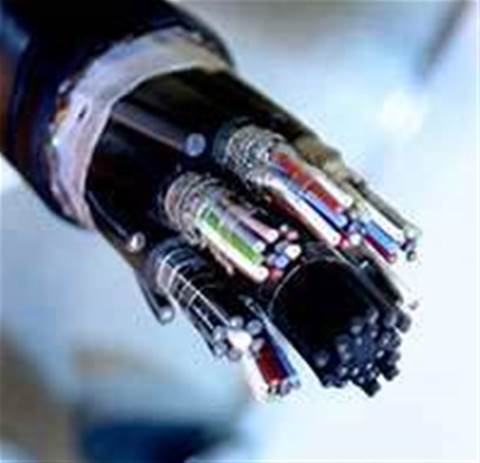Telstra will forge ahead with plans to roll out speed upgrades for its hybrid-fibre coaxial network nationally from next month, despite impending finalisation of the company's deal with NBN Co.
The upgrade will see homes in Sydney, Brisbane, Perth, Adelaide and the Gold Coast receive an upgrade to the DOCSIS 3.0 HFC cable broadband standard, boosting downstream speeds from a peak of 30 Mbps to 100 Mbps.
Chief executive David Thodey let slip to analysts this morning that a national upgrade of the system will likely start in the second week of December.
Cable customers in Melbourne received the 100 Mbps upgrade in December 2009 as part of a trial rollout, though residents were required to be on Telstra's newer Siebel-based billing system.
Other cities received a belated upgrade to 30 Mbps last year.
Support documentation indicated Telstra had planned a wider rollout for other cities in December this year but the telco has not confirmed that until now.
A spokesman for the company said the upgrade had been planned due to "increased customer demand", including a two-fold jump in the amount of data consumed over fixed line services.
The national HFC upgrade will see Telstra join rival Optus, which completed a national upgrade to the DOCSIS 3.0 standard last year for its 427,000 customers in Brisbane, Sydney and Melbourne.
Smaller provider TransACT had also upgraded its network in regional Victoria, passing 80,000 premises.
The upgrades had been publicly planned by both Optus and Telstra as early as 2007, though the latter had also considered a fibre-to-the-node rollout in the lead-up to the NBN.
Though DOCSIS 3.0-enabled cable networks could theoretically achieve speeds of 160 Mbps downstream and 120 Mbps upstream, individual user speeds are currently pegged at 100 Mbps and 2 Mbps respectively in Australia.
But the upgrade could be short-lived for some cable customers. As part of the $9 billion agreement between Telstra and NBN Co, the incumbent telco agreed to decommission fixed broadband services over its copper and HFC cable networks in an NBN rollout area once fibre had been rolled out to premises there.
The first-year indicative rollout plan released by NBN Co last month shows several metropolitan locations in NSW, Victoria and Western Australia are expected to start receiving NBN fibre from next year, in areas where the two networks may overlap.
It is expected NBN Co will deem a fibre rollout area "ready for service" 18 months after it first begins construction there.
The company recently told a parliamentary committee that it will begin disconnecting customers from existing networks some time next year.
Telstra and NBN Co have continued to push for completion of the $9 billion agreement ahead of its December 20 deadline, pending approval of Telstra's structural separation undertaking and customer migration plan by the competition watchdog, which disavowed draft versions of each.
Should the plans receive "material changes" it would also require a second vote by Telstra shareholders - who overwhelming voted in favour of the deal at the telco's recent annual general meeting - and could further push back the deal's signing.
iTnews understands Thodey told analysts this morning that the NBN remained years away, motivating Telstra to continue with planned network upgrades.
The incumbent telco also began upgrading 2000 street cabinets nationally this month to expand ADSL2+ capacity in some areas.
The move was widely seen by analysts and observers as Telstra hedging its bets on the NBN deal not coming to fruition or the network being cancelled in event of a coalition win at the next federal election.






.jpg&h=142&w=230&c=1&s=1)





.jpg&w=100&c=1&s=0)
_(8).jpg&w=100&c=1&s=0)









